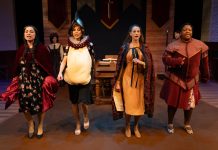East Culver City residents who have complained of noise and other irritants from the tracks of the Exposition Light Rail Line will soon have what many have called for: a noise and vibration test to gauge the noise level emanating from the tracks.
But first, Expo authorities say some construction work must be done near what is called the National Crossover near National Boulevard and Cattaraugus Avenue. The work was scheduled to begin at 11 p.m. Sept. 18 and end at 4 a.m. Thursday, Sept. 19.
After the new spring frog is installed, Metro officials will begin noise and vibration testing of the adjacent to the east Culver City. Expo Construction Authority officials said the work required cutting off the rear bracket, welding on a new bracket and then bolting on the retarder.
“The equipment supplier, Nortrak, expects that it should not take more than two hours to complete the installation,” Culver City Senior Public Works Analyst John Rivera told the News. “This will be a trial installation to determine if the redesigned retarder has the same issues as the current retarders.”
Spring frogs are devices that allow the movement of a train from one rail track onto another parallel track, according to Rivera.
“They were originally selected and installed were intended to reduce potential noise impacts of the Expo Project at the National Crossover between Cattaraugus Avenue and Sherbourne Drive,” the Public Works analyst explained. “The existing frogs are not operating as anticipated, therefore they are proposed to be replaced in the coming months.”
A retarder is a single element in the spring frog system and will be monitored to determine if it is operating as intended. Since the Expo Line arrived in Culver City last year, city officials and transportation authorities have lauded the light rail line as a welcome alternative to driving and are looking at different approaches to connect passengers coming into the city via light rail to downtown Culver City.
But for residents east of National, there has been less fanfare. Instead, some residents say it has altered the quality of their lives. The removal of trees that resident Alana Shiparo said were natural sound barriers to the noise emanating from the train tracks was only one of several decisions made by Metro that several of the east Culver City homeowners feel has contributed to their plight.
“The only sound wall that seems to be working is between us and Metro,” Shiparo said in an earlier interview with the News. Don Gilbert, who lives near Sherbourne, said he was surprised that these changes had not occurred until recently at the crossover. “I certainly hope it works,” Gilbert said of the construction replacements.
The redesigned retarder will be monitored for three to four weeks, Rivera said. “If this redesigned retarder proves to be a success, the other three retarders at the National Crossover will need to be replaced, along with the installation of a new spring frog for the National Crossover,” Rivera said.
A schedule for the installation of the new spring frog has not be determined, but it is anticipated that installation should be sometime before the end of this year.
“If the retarder is operating as anticipated, the spring frogs and other retarders at the National Crossover will be replaced before the end of the year,” Rivera said.
Over the last several months, Expo has replaced some components of the crossover equipment. In addition, they have caulked the gaps between the sound walls and the foundation walls, and closed the gaps at the corners of the sound walls that were identified on the perimeter sound wall.
Asked what is the mood of his neighbors regarding the problems with the train, Gilbert responded, “Anger and frustration.”












